2008 GMC Yukon Hybrid 4×4 Review

Let's get something out of the way right now: the Yukon Hybrid is over-priced. Our tester stickered at $56k. At that price point, GM's gas – electric SUV competes against BMW's enlarged X5, Audi's Q7 carcoon and Lexus' golf club friendly RX 400h (to name a few). Hybrid or no, the GMC Yukon's not exactly what you'd call an upmarket machine. If The General had taken the hit and offered the Yukon Hybrid for the same price or less than its gasoline equivalent, it would be a far more compelling proposition. But they didn't. So let's press on.
Aesthetically, the Yukon Hybrid is about as bashful as a drunken sorority girl at Panama City Beach Spring Break. The big rig's plastered with no fewer than nine proclamations that it possess a gas-electric drivetrain, including three-foot-long "Hybrid" stickers along its mighty flanks. Custom side skirts, a rear spoiler and good-looking low-weight 18-inch wheels add more not-so-subtle style (and mpgs) to the equation.
Other than that, it's a Yukon: big, bland and boxy. OK, the SUV's creases were sharpened pre-Hurricane Katrina, but the Yukon's looks still aren't going to blow anyone away.
To drop the Yukon Hybrid's aerodynamic Cd from .39 to .34, GM re-softened those sharpened creases with a slightly reshaped hood and rear hatch, and lost the roof rack. Although the new hood and hatch are fashioned from aluminum, the Yukon Hybrid's batteries and electric motor make it heavier than the standard model. The Yukon Hybrid's heft rises from either 5270 to 5541 lbs., or from 5438 to 5617 lbs., depending on whether you believe GM PR or the GMC website.
GM's new truck interiors may be far better than anything they've ever offered, boasting attractive chrome accents and a real woven headliner. But at $51k (base), the Yukon Hybrid's interior feels cheaper than a Las Vegas motel on a Tuesday afternoon. Fake wood and aluminum abound. Vinyl that tries (and fails) to look like leather stretches across the ample dashboard. The seats are flat and unsupportive, and the optional third row seat is unusable for anyone but Hobbits.
The Hybrid comes amply-equipped with navigation, rear parking camera, auto climate control and power everything. In complete contrast to the exterior, only a small Hybrid logo, an "Eco" gauge and a Prius-like touch screen drivetrain display remind the driver that they're piloting the world's largest private passenger hybrid.
To maintain the Yukon's cavernous interior, the engineers utilized the undercarriage space for the NiMH batteries. Part of that space was realized (and the beast's weight gain minimized) by replacing the full-size spare tire with a can of sealant– not exactly what you'd expect in a 4×4. Not that you'd ever take those low-rolling-resistance donuts off-road. On the positive side, the Yukon Hybrid 4X4's towing capacity is a respectable 6000 lbs. (down from 8000 lbs.).
Which may account for GM's decision to equip the Yukon Hybrid with a 332hp, 6.0-liter Vortec engine. In any case, the monster motor becomes a hybrid with the addition of a 300V battery, two 60KW motors in the transmission and some creative software.
I've never driven a full hybrid this seamless in operation. You never notice when the drivetrain changes modes, from electric to gas and back. The electric boost comes on smoothly; the power delivery remains silken as the engine spools-up. When revved hard, the 6.0-liter offered a muted yet spine-tingling burble. Despite the weight, the excellent drivetrain pushes the Yukon from zero to sixty miles per hour in about eight seconds. The system manages a decent-for-such-a-behemoth 20mpg both in the city AND on the highway.
The Yukon Hybrid's suspension is as ridiculous as the drivetrain is sublime. The steering feels vague at low speeds and darty on the highway. Engaging four-wheel-drive mode makes the rig feel like a forklift, with all four wheels pushing in different directions. The Yukon skitters and wallows during cornering and shudders like a Sebring convertible over rough patches. The massive weight smooths out the ride to decent levels, but the European and Japanese competition put the Yukon to shame in comfort, control and cornering ability.
As for that highly-touted 25 percent fuel economy improvement, yes, I achieved the advertised mpg in mixed driving. But I wonder how much of that gain's down to the non-drivetrain mods. Equally perplexing: why hasn't GM incorporated them into normal Yukotahburbelades? Is the American automaker shortchanging their gas-powered SUVs to protect the hybrid versions' rep? Clearly, the Yukon Hybrid raises more questions than it answers. Meanwhile, one thing is for sure: at that price, in this market, the Yukon Hybrid will not be flying off the lots.

More by Mike Solowiow
Latest Car Reviews
Read moreLatest Product Reviews
Read moreRecent Comments
- W Conrad I'm not afraid of them, but they aren't needed for everyone or everywhere. Long haul and highway driving sure, but in the city, nope.
- Jalop1991 In a manner similar to PHEV being the correct answer, I declare RPVs to be the correct answer here.We're doing it with certain aircraft; why not with cars on the ground, using hardware and tools like Telsa's "FSD" or GM's "SuperCruise" as the base?Take the local Uber driver out of the car, and put him in a professional centralized environment from where he drives me around. The system and the individual car can have awareness as well as gates, but he's responsible for the driving.Put the tech into my car, and let me buy it as needed. I need someone else to drive me home; hit the button and voila, I've hired a driver for the moment. I don't want to drive 11 hours to my vacation spot; hire the remote pilot for that. When I get there, I have my car and he's still at his normal location, piloting cars for other people.The system would allow for driver rest period, like what's required for truckers, so I might end up with multiple people driving me to the coast. I don't care. And they don't have to be physically with me, therefore they can be way cheaper.Charge taxi-type per-mile rates. For long drives, offer per-trip rates. Offer subscriptions, including miles/hours. Whatever.(And for grins, dress the remote pilots all as Johnnie.)Start this out with big rigs. Take the trucker away from the long haul driving, and let him be there for emergencies and the short haul parts of the trip.And in a manner similar to PHEVs being discredited, I fully expect to be razzed for this brilliant idea (not unlike how Alan Kay wasn't recognized until many many years later for his Dynabook vision).
- B-BodyBuick84 Not afraid of AV's as I highly doubt they will ever be %100 viable for our roads. Stop-and-go downtown city or rush hour highway traffic? I can see that, but otherwise there's simply too many variables. Bad weather conditions, faded road lines or markings, reflective surfaces with glare, etc. There's also the issue of cultural norms. About a decade ago there was actually an online test called 'The Morality Machine' one could do online where you were in control of an AV and choose what action to take when a crash was inevitable. I think something like 2.5 million people across the world participated? For example, do you hit and most likely kill the elderly couple strolling across the crosswalk or crash the vehicle into a cement barrier and almost certainly cause the death of the vehicle occupants? What if it's a parent and child? In N. America 98% of people choose to hit the elderly couple and save themselves while in Asia, the exact opposite happened where 98% choose to hit the parent and child. Why? Cultural differences. Asia puts a lot of emphasis on respecting their elderly while N. America has a culture of 'save/ protect the children'. Are these AV's going to respect that culture? Is a VW Jetta or Buick Envision AV going to have different programming depending on whether it's sold in Canada or Taiwan? how's that going to effect legislation and legal battles when a crash inevitibly does happen? These are the true barriers to mass AV adoption, and in the 10 years since that test came out, there has been zero answers or progress on this matter. So no, I'm not afraid of AV's simply because with the exception of a few specific situations, most avenues are going to prove to be a dead-end for automakers.
- Mike Bradley Autonomous cars were developed in Silicon Valley. For new products there, the standard business plan is to put a barely-functioning product on the market right away and wait for the early-adopter customers to find the flaws. That's exactly what's happened. Detroit's plan is pretty much the opposite, but Detroit isn't developing this product. That's why dealers, for instance, haven't been trained in the cars.
- Dartman https://apnews.com/article/artificial-intelligence-fighter-jets-air-force-6a1100c96a73ca9b7f41cbd6a2753fdaAutonomous/Ai is here now. The question is implementation and acceptance.



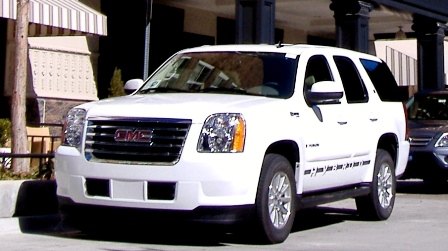




















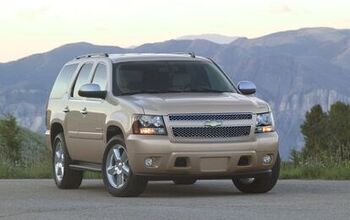
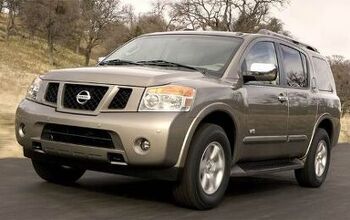

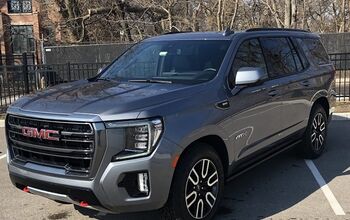
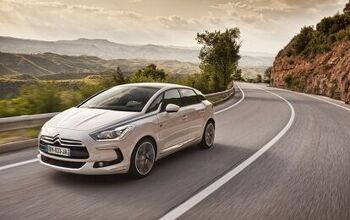










Comments
Join the conversation
This is what happens when engineering goes down the drain. Either costs are cut and the engineers are limited to what they can or can't do so they don't waste time trying and therefore poorly engineered vehicles are marketed and sales go down because for the same price as this piece of crap you can buy a finely engineered BMW X5, AUdi Q7, Toyota Sequoia, or a Lexus RX 400h. Then GM has the intelligence to hybrid such a heavy gas guzzling SUV. They engineered the Escalade to so you can be cool and think you are saving the planet to. What's next for GM, are they going to hybrid a Tank?
What is GM's next move, are they going to Hybrid a tank and sell it to the Army?